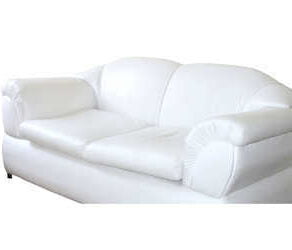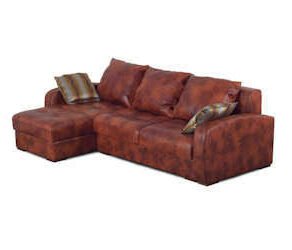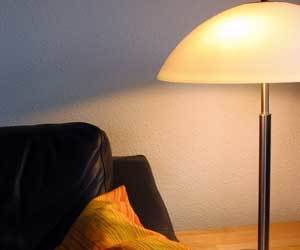The key to keeping a leather chamois in supple and in good working condition is to remove dirt without removing the natural oils in the leather. Removing dirt is important not only so the cham can continue to clean well, but also because any small specks of dirt on the leather can scratch delicate surfaces like automobile paint. As with any leather product, it is best to avoid alkaline cleaners, such as most detergents, because they can dry out the leather. In the case of a leather chamois, the natural oils and supple texture is what makes the product work well. Follow the instructions below to clean away any dirt or grime and if needed, to restore the natural oils in the leather.
to keeping a leather chamois in supple and in good working condition is to remove dirt without removing the natural oils in the leather. Removing dirt is important not only so the cham can continue to clean well, but also because any small specks of dirt on the leather can scratch delicate surfaces like automobile paint. As with any leather product, it is best to avoid alkaline cleaners, such as most detergents, because they can dry out the leather. In the case of a leather chamois, the natural oils and supple texture is what makes the product work well. Follow the instructions below to clean away any dirt or grime and if needed, to restore the natural oils in the leather.
Cleaning the Chamois
You Will Need:
- Soap flakes or pH balanced soap
- A bucket
- Water
Steps to Clean the Chamois:
- Get soap flakes or a soap that is pH balanced for skin. Most soaps and detergents are alkaline, which can dry out the leather. If you need to use an alkaline product, such as dishwashing liquid, be sure to follow the steps in the section below for Restoring Chamois Oils.
- Fill a bucket with as much water as needed and stir in the soap.
- Move the chamois around in the soapy water to clean it. Rub it gently between your fingers in particularly dirty areas.
- When the chamois is clean, rinse it thoroughly with warm water. Be sure to remove all of the soap residue.
- Gently squeeze the chamois to remove excess water. Do not twist or wring it, only press it between your fingers to squeeze it.
- Stretch and reform the leather to its original shape with your hands to remove any wrinkles.
- If the chamois was starting to feel stiff or dry before you cleaned it, follow the steps below for Restoring Chamois Oils.
- Lay the chamois out flat to dry or hang it to dry if preferred. We recommend folding it over a clothes hanger and hanging it in the shower to drip dry.
- Be sure the chamois is fully dry before putting it away.
Restoring Chamois Oils
You Will Need:
- A bucket
- Water
- Olive oil
Steps to Restore the Chamois Oils:
- Fill a bucket half-way with water.
- Add ½ teaspoon of olive oil to the water.
- Put the chamois in the bucket to soak for about 10 minutes. Occasionally swirl the chamois through the water.
- Remove the chamois from the bucket and gently squeeze it to remove excess water. Do not twist or wring the material; press it between your fingers to squeeze it.
- Lay the chamois out flat to dry or hang it to dry if preferred. We recommend folding it over a clothes hanger and hanging it in the shower to drip dry.
- Be sure the chamois is fully dry before putting it away.
Additional Tips:
- Do not put the chamois in direct sunlight for drying or storage.
- Do not put the chamois near a heat source for drying or storage.
Sources:
- Haynes Techbook Automotive Detailing Manual by Jay D. Storer and John H. Haynes
- Clean It Fast, Clean It Right by Jeff Bredenberg
- Joey Green’s Cleaning Magic by Joey Green
- Martha Stewart’s Homekeeping Handbook by Martha Stewart
- The Cleaning Bible by Kim Woodburn and Aggie Mackenzie









I would like to know what makes a chamois able to remove your finger oils, such as on a phone screen, and yet retain it’s natural oils when washed.
In addition, I would like to know an example (not a brand reccommendation, if contrary to site policy) of a soap-flake or non-alkaline soap.
In addition, I’d like to understand what olive oil has that makes it one of the “good” oils for a chamois.
Whew! Thank you!
Migemet,
Here are the answers to your questions:
1) To answer your first question, it’s the cleaning principal of ‘like dissolves like’. The oil on the chamois breaks down the oil from your fingerprints. The chamois is absorbent, so it then gathers up the oil. Oil and water do not mix, which is partially why the chamois retains most of its oil when washed, but it’s also because the chamois is porous, so the oil is soaked deep into and throughout the chamois. Washing the chamois with soap will primarily work to lift and remove the dirt that’s on it, along with some surface oil. It’s possible to wash out too much of the oil from the chamois though, which is why you may need to restore the oil after cleaning if it feels dry.
2) The important part of soap flakes or ph-balanced soap is that they are in fact “soap” and not “detergent”. Soap is a natural material made from either plants or animals and is less harsh than a detergent, which is made from chemicals. They can be found online by searching “soap flakes.” Here is an example on Amazon. Most soaps have a high pH, which is not ideal for skin (ie. leather), so if you want to make your own soap flakes by shaving a bar of soap or if you would prefer not to use soap flakes, some examples of lower pH soaps are Dove, Oil of Olay and Caress.
3) There are many aspects of olive oil that make it more ideal to use than other oils. For starters, most other oils like canola or corn oil are pressed from seeds and high in polyunsaturated fats, which makes them go rancid much more quickly than olive oil, which is pressed from the fruit and low in polyunsaturated fats. Being pressed from the fruit, olive oil also contains antioxidants and just as it would be the oil you would want to use on your skin, it’s also a good pick for leather materials. Olive oil is also extremely common, which is why it is often used for leather and has been for so long. If you would like an alternative, avocado oil and coconut oil are gaining in popularity in recent years and can now be found at most grocery stores, and they could also work for moisturizing a chamois as they too are low in polyunsaturated fats like olive oil, and also contain antioxidants that are extremely nourishing for skin.
Great questions! Hope this helps!
Source: Bellatory – Healthy Skin: The pH of Popular Soaps
Source: Live Science – Why Does Cooking Oil Go Rancid?
Source: Live Science – The Science of Cooking Oils: Which are Really the Healthiest?